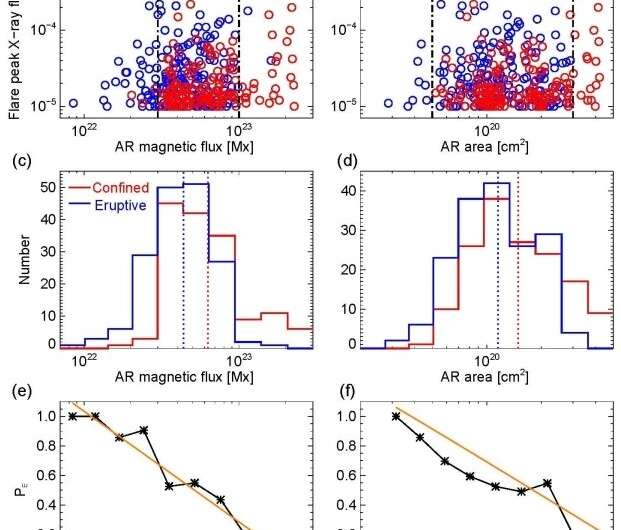Study reveals important factors determining eruptive character of large solar flares

Solar flares and coronal mass ejections (CME) are the most spectacular eruptive activities in the solar system. Large solar flares and CMEs can bring disastrous space weather, destroy our satellite and navigation system, and cause a large-scale blackout on Earth.
Recently, a research team led by Dr. Li Ting from the National Astronomical Observatories of the Chinese Academy of Sciences (NAOC) discovered important factors governing the eruptive character of large solar flares. The study was published in the Astrophysical Journal on Sept. 8.
"We have known the phenomenon of solar flares ever since the first observation by Carrington and Hodgson in 1859, and we have learned a great deal since then. But these basic questions remain with us: What powers a solar eruption? What triggers it? What is the relationship between flares and CMEs?" said Dr. Li, the first author of the study.
LI and her team used observations from the satellite of Solar Dynamics Observatory (SDO) during 2010-2019 and established the largest flare database to date. The database includes 322 large solar flares and the eruptive character of each large flare, i.e., whether the flare is associated with a CME or not.
Solar active regions (ARs) are the cradle producing solar flares and CMEs. "We found that the total magnetic flux of ARs is a key parameter in governing the eruptive character of large flares. This means that an AR containing a large magnetic flux has a lower probability for the large flares it produces to be associated with a CME," said Dr. Li.
For the strongest space weather effects, which are predominantly due to the CME rather than the flare, we cannot simply extrapolate that the space weather effects will be increasingly stronger for flares produced by large ARs present on the Sun, according to the study. We may speculate that in case of the much larger ARs (stellar spots) that are needed to produce the reported "superflares" on solar-type stars, the flares are probably not associated with CMEs. This may provide an explanation why the detection of stellar CMEs is rare.
More information: Ting Li et al. Magnetic Flux of Active Regions Determining the Eruptive Character of Large Solar Flares, The Astrophysical Journal (2020). DOI: 10.3847/1538-4357/aba6ef
Journal information: Astrophysical Journal
Provided by Chinese Academy of Sciences




















